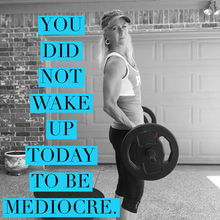What You Need to Know About Your Sports Drink
In this article I am going to tell you everything you need to know about your sports drink based on what I have learned from Ironman University. I want you to be able to have enough information to make the right choice for you when it comes to choosing a sports drink. There are so many brands out there and sometimes it can be overwhelming trying to find the right one for you.
Let me start by saying that sports drinks are simply used to replace lost fluids and electrolytes. They help you absorb carbs and promote thirst- yes, they need to keep you a little bit thirsty so that you keep on drinking! You want to drink your sports drink before, during, and after workouts. How do you choose which one? Here's some criteria:
It must absorb quickly. This means it shouldn't have any protein, fiber, or extra products that cause your stomach to work hard to digest it.
The carb concentration should be about 4-8% and should contain a few different kinds of carbs; less than 4% carbs doesn’t provide enough carbs to maintain glucose metabolism.
It should contain sodium.
It should be low in calories.
Factors that impede absorption of fluids:
1. Greater than 8% carbs in your sports drink. You can always add water to a higher concentration of carbs in a sports drink to dilute it to a more sufficient level.
2. Too many calories in your drink.
3. The athlete is dehydrated.
All of the above can stop your GI system from properly absorbing fluids and send you down the path of nausea, vomiting, etc. So how does an athlete know if their drink contains 4-8% carbs? Here’s the formula:
Carb content (in grams)
----------------------------- X 100 = Carbohydrate Percentage
Fluid volume (in milliliters)
Here’s an example using my 12oz bottle of Gatorade:
22g carbs
------------ X100 = 6% carbs (this fits the recommended 4-8% range)
355ml


Now let’s talk about sodium. It is important for retaining fluids and for absorption of glucose. The American College of Sports Medicine recommends that sports drinks should contain .5g to .7g of sodium per liter for workouts lasting greater than one hour. (ACSM.org) Let me give you an example using my 12oz bottle of Gatorade:
160mg sodium
------------------ =450mg sodium/liter (or .45 g of sodium/liter)
355 ml
Note- most sports drinks have a few different kinds of carbs and in my Gatorade example here, the carbs in this bottle are sugar and dextrose. You want to choose a drink that has 2 or 3 different kinds of carbs listed on the label.
A few words on Salty Sweaters:
Sometimes a sports drink may not have enough sodium concentration for “salty sweaters”. I can pick out a salty sweater by looking at the specs of dry salt on their skin and shirt after a long workout. I tell these athletes that they need to supplement their sodium intake during long workouts either with a tsp of table salt added to their sports drink, or even better is to consume salt tablets during their workout. Ironman recommends 500mg-700mg of table salt per hour for salty sweaters. This is usually one salt tablet per hour in most cases. There are plenty of electrolyte supplements on the market, but I hesitate to use these as they sometimes contain other products such as magnesium which can impede gastric emptying. If athletes are going to take these, I recommend trying them out on several long rides and runs to be sure that they don’t cause GI issues.
The gastrointestinal tract needs to be emptying and taking in fluids smoothly during a long effort. You want to avoid anything that will upset this balance by choosing your sports drinks carefully. It’s a good idea to do a sweat test a few times during your training so you know how much fluid you need to replace each hour on the bike and run. (Message me HERE for instructions on how to do this!)
Whatever you drink during training, be sure to use that same drink on race day. I have my athletes PRACTICE their nutrition as part of the workout, especially as we go into the peak weeks of training. I hope this article was helpful to you and clarifies what to look for in a sports drink, particularly carbohydrate and sodium concentrations.
Need a triathlon coach for your next race? Let’s talk! You can shoot me an email by clicking HERE for a free 15 minute phone call!
Source: University.ironman.com


























Comentarios